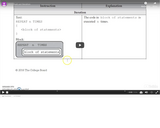
Interactive video reviewing iteration and how it will be presented on the AP Exam.
- Subject:
- Applied Science
- Computer Science
- Material Type:
- Interactive
- Provider:
- Michigan Virtual
- Date Added:
- 12/11/2018

Interactive video reviewing iteration and how it will be presented on the AP Exam.
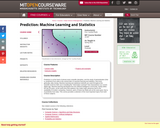
Prediction is at the heart of almost every scientific discipline, and the study of generalization (that is, prediction) from data is the central topic of machine learning and statistics, and more generally, data mining. Machine learning and statistical methods are used throughout the scientific world for their use in handling the "information overload" that characterizes our current digital age. Machine learning developed from the artificial intelligence community, mainly within the last 30 years, at the same time that statistics has made major advances due to the availability of modern computing. However, parts of these two fields aim at the same goal, that is, of prediction from data. This course provides a selection of the most important topics from both of these subjects.
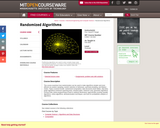
Studies how randomization can be used to make algorithms simpler and more efficient via random sampling, random selection of witnesses, symmetry breaking, and Markov chains. Models of randomized computation. Data structures: hash tables, and skip lists. Graph algorithms: minimum spanning trees, shortest paths, and minimum cuts. Geometric algorithms: convex hulls, linear programming in fixed or arbitrary dimension. Approximate counting; parallel algorithms; online algorithms; derandomization techniques; and tools for probabilistic analysis of algorithms.
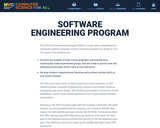
The Software Engineering Program (SEP) is a multi-year, comprehensive, standards-aligned computer science education program for grades 6 to 12. The goals of the program are:
-Increase the number of high school graduates, particularly from traditionally underrepresented groups, that are ready to pursue new and emerging technology-driven roles across industries.
-Develop student computational thinking and problem-solving skills in real-world contexts.
The SEP curriculum gives students instruction and experience in the following areas: computer programming, robotics, web design, physical computing, and game design. SEP students participate in local and central hackathons, and in work-based experiences with major industry leaders and partners.

Students use a simple seesaw to visualize solving a two- or three-step mathematics equation, while solving a basic structural engineering weight balance problem in the process. They solve two-step equations on a worksheet and attempt to solve the challenge of "balancing a beam" through hands-on problems. The use of sensor equipment for correct position monitoring aids students in balancing the structure, as well as balancing the equation as they solve it on paper.
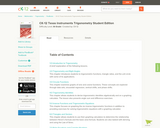
CK-12's Texas Instruments Trigonometry Student Edition Flexbook is a helpful companion to a trigonometry course, providing students with more ways to understand basic trigonometric concepts through supplementary exercises and explanations.
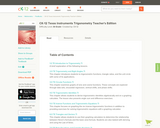
CK-12's Texas Instruments Trigonometry Teacher's Edition Flexbook is a helpful companion to a trigonometry course, providing students with more ways to understand basic trigonometric concepts through supplementary exercises and explanations.
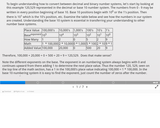
Course presentation will teach students to convert between decimal and binary number systems.
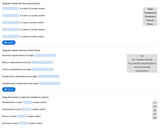
Practice activity will help students identify number base systems

Course presentation will be an introduction to variables using mathematical operations.